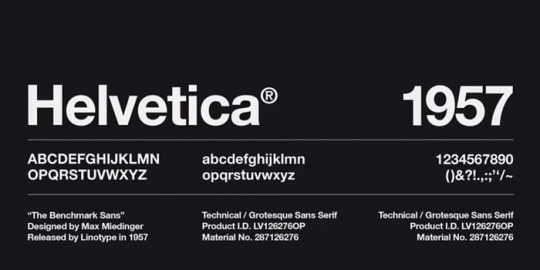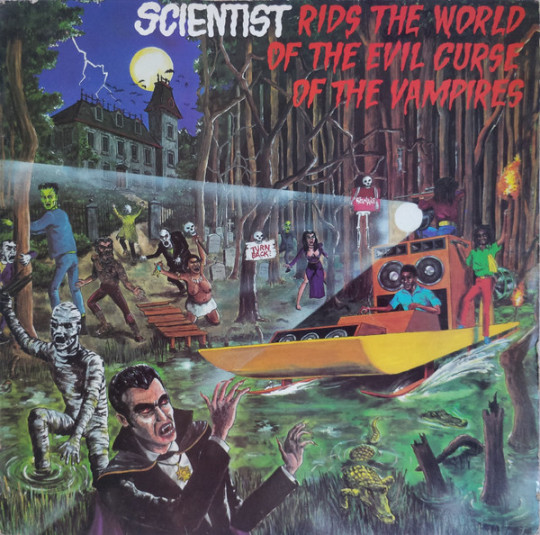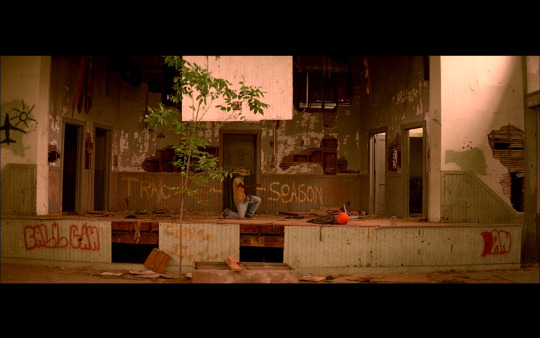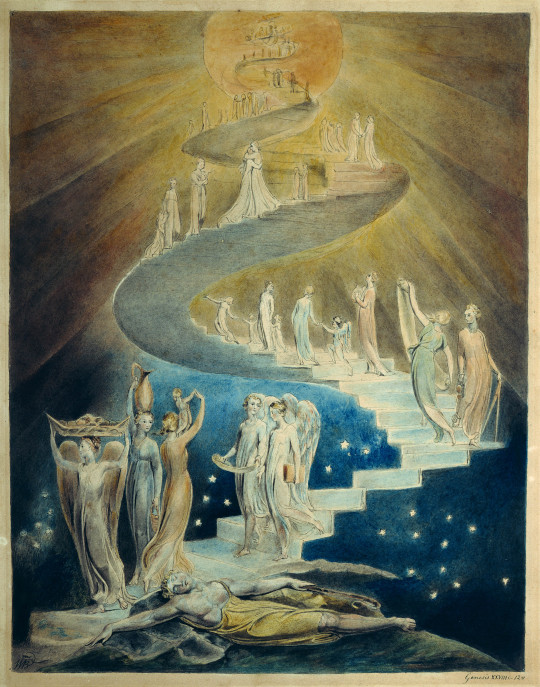#Panasonic Corporation
Text
Panasonic North America: Leica and Panasonic Sign Strategic Comprehensive Collaboration Agreement
Panasonic North America: Leica and Panasonic Sign Strategic Comprehensive Collaboration Agreement
Leica and Panasonic Sign Strategic Comprehensive Collaboration Agreement
Develop “L² Technology” as Symbol of the Collaboration
May 31, 2022
Today, Panasonic Entertainment & Communication Corporation, the business unit responsible for LUMIX imaging, and Leica Camera AG announced a new agreement for a comprehensive and expanded business alliance. Both companies are committing to increase the…

View On WordPress
0 notes
Note
What kind of work can be done on a commodore 64 or those other old computers? The tech back then was extremely limited but I keep seeing portable IBMs and such for office guys.
I asked a handful of friends for good examples, and while this isn't an exhaustive list, it should give you a taste.
I'll lean into the Commodore 64 as a baseline for what era to hone in one, let's take a look at 1982 +/-5 years.
A C64 can do home finances, spreadsheets, word processing, some math programming, and all sorts of other other basic productivity work. Games were the big thing you bought a C64 for, but we're not talking about games here -- we're talking about work. I bought one that someone used to write and maintain a local user group newsletter on both a C64C and C128D for years, printing labels and letters with their own home equipment, mailing floppies full of software around, that sorta thing.
IBM PCs eventually became capable of handling computer aided design (CAD) work, along with a bunch of other standard productivity software. The famous AutoCAD was mostly used on this platform, but it began life on S-100 based systems from the 1970s.
Spreadsheets were a really big deal for some platforms. Visicalc was the killer app that the Apple II can credit its initial success with. Many other platforms had clones of Visicalc (and eventually ports) because it was groundbreaking to do that sort of list-based mathematical work so quickly, and so error-free. I can't forget to mention Lotus 1-2-3 on the IBM PC compatibles, a staple of offices for a long time before Microsoft Office dominance.
CP/M machines like Kaypro luggables were an inexpensive way of making a "portable" productivity box, handling some of the lighter tasks mentioned above (as they had no graphics functionality).
The TRS-80 Model 100 was able to do alot of computing (mostly word processing) on nothing but a few AA batteries. They were a staple of field correspondence for newspaper journalists because they had an integrated modem. They're little slabs of computer, but they're awesomely portable, and great for writing on the go. Everyone you hear going nuts over cyberdecks gets that because of the Model 100.
Centurion minicomputers were mostly doing finances and general ledger work for oil companies out of Texas, but were used for all sorts of other comparable work. They were multi-user systems, running several terminals and atleast one printer on one central database. These were not high-performance machines, but entire offices were built around them.
Tandy, Panasonic, Sharp, and other brands of pocket computers were used for things like portable math, credit, loan, etc. calculation for car dealerships. Aircraft calculations, replacing slide rules were one other application available on cassette. These went beyond what a standard pocket calculator could do without a whole lot of extra work.
Even something like the IBM 5340 with an incredibly limited amount of RAM but it could handle tracking a general ledger, accounts receivable, inventory management, storing service orders for your company. Small bank branches uses them because they had peripherals that could handle automatic reading of the magnetic ink used on checks. Boring stuff, but important stuff.
I haven't even mentioned Digital Equipment Corporation, Data General, or a dozen other manufacturers.
I'm curious which portable IBM you were referring to initially.
All of these examples are limited by today's standards, but these were considered standard or even top of the line machines at the time. If you write software to take advantage of the hardware you have, however limited, you can do a surprising amount of work on a computer of that era.
43 notes
·
View notes
Note
Do you think the Yaoyorozus are descended from a powerful financial group in the past? Because even today, firms that started in the early 1900s still have major influence in the Japanese economy today (e.g. Mitsubishi, Nissan, Panasonic, etc).
It would make sense for the Yaoyorozus to be from a minor branch of a family that owns one of these corporations that grew to prominence in the industrial rebuilding following the Age of Chaos.
But that’s just my theory. What are your thoughts?
The Yaoyorozu family is clearly meant to be one of the zaibatsu/keiretsu (mostly the more modern keiretsu) conglomerates. Actually, considering the history of these, the Yaoyorozu family rising to prominence from the ashes of the Dawn of Quirks makes sense
26 notes
·
View notes
Text
Helvetica: A Deep Dive into the World’s Most Ubiquitous Typeface

Helvetica, a typeface synonymous with clarity and modernity, reigns supreme in the world of design. Its widespread use, from iconic brand logos to everyday signage, speaks volumes about its enduring appeal and versatility. This blog post will explore the origins, characteristics, and lasting impact of Helvetica, tracing its journey to becoming a global design phenomenon.
Swiss Origins and Design Philosophy

Helvetica emerged from the heart of Swiss graphic design in 1957, born from the collaboration of Max Miedinger and Eduard Hoffmann at the Haas Type Foundry. Switzerland, renowned for its precision and efficiency, provided a fertile ground for this revolutionary typeface to flourish. At its core, Helvetica embodies the principles of the International Typographic Style (also known as Swiss Style), which emphasized cleanliness, readability, and objectivity. This movement embraced the use of grids, sans-serif typefaces, and asymmetrical layouts to create balanced and harmonious designs.
The Making of a Masterpiece: From Neue Haas Grotesk to Helvetica

Helvetica’s journey to becoming a global icon involved a series of pivotal moments. Initially christened Neue Haas Grotesk, the typeface was a refined interpretation of the earlier Akzidenz Grotesk typeface. In 1961, Stempel, the parent company of Haas Type Foundry, strategically renamed it Helvetica, meaning “Swiss” in Latin, to broaden its appeal in the international market. This decision proved to be a masterstroke, as Helvetica rapidly gained traction worldwide.
Anatomy of Helvetica: Decoding its Visual Language

Helvetica’s enduring allure lies in its meticulously crafted letterforms and distinctive characteristics. Its simple, geometric shapes and uniform stroke widths contribute to its exceptional legibility. Key features include:
Minimal stroke contrast: The difference in thickness between the thickest and thinnest parts of a letterform is subtle.
Horizontal and vertical cut-offs: The ends of strokes are cut straight, creating a clean and crisp appearance.
Tight spacing between letters: Letters are set close together, resulting in a compact and unified look.
Large x-height: The height of lowercase letters is relatively large, further enhancing readability.
Closed apertures: The enclosed spaces within letters like ‘a’, ‘e’, and ‘o’ are relatively small.
These carefully considered details work in harmony to create a typeface that is both aesthetically pleasing and incredibly functional.
Helvetica’s Enduring Legacy: A Testament to Timeless Design

Helvetica’s influence on the world of design is undeniable. Its neutrality and versatility have made it a go-to choice for a wide range of applications, from corporate branding to transportation signage. Iconic brands like Knoll, American Airlines, and Panasonic have all harnessed the power of Helvetica to communicate their brand identities effectively. The typeface’s presence extends beyond the corporate world, finding its way into film title sequences (Goodfellas, Split, Alien) and even becoming the official typeface of the New York City subway system. Helvetica’s ability to transcend cultural boundaries and resonate with audiences worldwide is a testament to its timeless appeal. As Wim Crouwel, a renowned typographer, aptly stated, “The meaning is in the content of the text and not in the typeface, and that is why we loved Helvetica very much.”
4 notes
·
View notes
Text
Transcritical CO2 Market Analysis Growth Forecast by 2030

The Insight Partners has unveiled its latest market research offering, providing a comprehensive analysis of the “Transcritical CO2 Market” and growth potential. The report, titled “Transcritical CO2 Market Size, Share and Trends | 2030” is a culmination of extensive research and expert insights, offering valuable information for both dominant market players and bootstrapped startups aiming to make informed decisions in the “Transcritical CO2 Market”.
We are committed to delivering high-quality market research that empowers businesses to thrive in a rapidly evolving market environment. Our research analysts have used top-down, bottom-up, primary, and secondary research approaches to evaluate and approve the market conclusions. The insights presented in the “Transcritical CO2 Market Report” are designed to assist companies in formulating effective strategies for growth and sustainability.
The report offers statistical data such as market share, size, and CAGR estimates. A thorough “Transcritical CO2 Market Analysis” revealed the key companies operating are:
1.TEKO Gesellschaft fur Kaltetechnik mbH
2.Baltimore Aircoil Co
3.BITZER Kuhlmaschinenbau GmbH
4.Carrier Global Corp
5.Danfoss AS
6.Hussmann Corp
7.Emerson Electric Co
8.Panasonic Holdings Corp
9.Evapco LMP Inc
10.Mayekawa Manufacturing Co Ltd and others. This market research is based on data and facts collected from authoritative sources.
Key Highlights of the Report
Uncovering the dynamic forces driving the “Transcritical CO2 Market Growth”, such as economic factors, technological advancements, and regulatory influences.
Understanding consumer behavior by delving into consumer preferences, purchasing patterns, and factors influencing buying decisions.
Breaking down the Transcritical CO2 market into key segments, providing a detailed examination of each segment's “Transcritical CO2 market share”, growth potential, and strategic considerations.
Analyzing regional trends and variations, offering businesses a nuanced understanding of market dynamics in different geographical areas.
Analysis of key players in the market, including their market share, product portfolios, and key strategies.
By combining a strategic approach, advanced methodologies, and a commitment to quality, we strive to set the standard for excellence in market research. Our dedication to innovation ensures that our clients receive insights that drive success in the ever-evolving landscape of any market.
What contributes to the authenticity of this research?
Comprehensive summary of present Transcritical CO2 market condition.
Accurate estimations on market revenue forecasts and CAGR to rationalize resources.
Regional reporting to uncover new markets for business
Competition analysis aims to help corporations in a modest edge.
Facts-based crystal-clear insights for business success.
The research is modified as per business necessities.
Access to PDF, and PPT formats of this research.
Why Choose Customization with The Insight Partners?
Relevance and Precision: Receive insights directly relevant to your operations, enhancing decision-making effectiveness.
Cost-Efficiency: Pay for insights that align with your objectives, optimizing your investment.
Strategic Alignment: Seamlessly integrate findings with existing strategies for enhanced organizational success.
Consumer Trends and Insights
The report captures the latest “Transcritical CO2 market trends”, emerging technologies, and industry shifts, empowering clients to stay ahead of the curve. This section will present insights on brand promotion, product marketing, and target consumers.
Market Segmentation
This market research is based on key segments such as products, end-use industries, and regions. We intend to keep our clients informed about the latest trends in the market, and potential revenue streams for the forecast period.
On the Basis of Application this market is categorized further into-
Ice Skating Rinks
Food Processing & Storage Facilities
Heat Pumps
Supermarkets & Convenience Stores
and Others
On the Basis of Function this market is categorized further into-
Air Conditioning
Refrigeration
and Heating
Key regions Transcritical CO2 Market Research Report:
North America (U.S., Canada, Mexico)
Europe (U.K., France, Germany, Spain, Italy, Central & Eastern Europe, CIS)
Asia Pacific (China, Japan, South Korea, ASEAN, India, Rest of Asia Pacific)
Latin America (Brazil, Rest of Latin America)
The Middle East and Africa (Turkey, GCC, Rest of the Middle East and Africa)
Rest of the World
Published by -
Rohan Gosavi
Senior Market Research Expert at The Insight Partners
#transcriticalCO2#greencooling#sustainablecooling#tumblr#tumblrposts#tumblrwriting#marketresearch#businessintelligence#industrytrends#marketstrategy
2 notes
·
View notes
Text
Sports Technology Market Size, Trends, Huge Opportunities, 2023

The Sports Technology market report by stats and research is a research study that concentrates on all the key marketing variables fueling the market's growth. The market's regional and segmental sections were considered when creating the research report on the Sports Technology market. The SWOT analysis, PESTEL analysis, and PORTER'S five forces analyses are all included in the report, along with all qualitative and quantitative market characteristics. The report provides a comprehensive understanding of the Sports Technology market by covering the market's size, growth rates, estimates, and value predictions for the forecast period.
Sports Technology from 2018 to 2021 and its CAGR from 2018 to 2021, and also forecasts its market size to the end of 2030 and its expected to grow with a CAGR of 20.8% from 2023 to 2030.
Get Free Sample Copy of Report:
https://www.statsandresearch.com/request-sample/40247-global-sports-technology-market
Top Key players in Sports Technology Market: Apple Inc., Catapult Group, ChyronHego Corporation, Cisco Systems, Inc., HCL Technologies Limited, IBM Corporation, Infosys Limited, Modern Times Group MTG, Oracle, Panasonic Corporation
#Sports Technology Market#Sports Technology#Sports Technology Market Growth#Sports Technology Market Trends
2 notes
·
View notes
Quote
パナソニックコネクトと米国の同社グループ会社であるPanasonic Avionics Corporation(PAC)は、2022年末にサイバー攻撃を受け、従業員に関する個人情報が外部に流出した可能性があることを明らかにした。
パナソニックコネクトによれば、PACの社内ネットワーク環境におけるシステムがサイバー攻撃を受けたもの。約1年前となる2022年12月30日に判明し、外部協力のもと調査を進めていた。
2023年12月初旬に調査を終え、パナソニックコネクトのアビオニクスビジネスユニット(ABU)やPACに在籍中の従業員や過去在籍した元従業員の個人情報が流出した可能性があることが判明した。氏名や電話番号、金融機関の口座番号、人事、雇用関連情報などが対象となる。
本誌取材に対し、具体的な人数については非公開とした。侵害を受けた原因、侵入経路、脅迫の有無なども明らかにしていない。今回明らかとなったインシデントは、PACの限定されたネットワークにとどまるとし、従業員情報以外の機密情報については流出を否定した。両社の事業継続などにも影響はなかったとしている。
今回の問題を受け、両社は関係当局へ報告を行っており、関係者に対しては12月14日よりメールや書面で通知を行っている。個人情報が外部へ公開されたり、悪用されたといった報告は受けていないという。
事態の発覚から公表までに約1年を要した理由については、「外部協力のもと本格的な調査を行い、事案全体や個人情報への影響について徹底的な調査を実施したため」と説明している。
【セキュリティ ニュース】2022年末にサイバー攻撃、従業員情報流出の可能性 - パナソニックグループ会社(1ページ目 / 全1ページ):Security NEXT
2 notes
·
View notes
Text
Kansas lawmakers have sent to Democratic Gov. Laura Kelly’s desk a bill to establish a flat income tax and eliminate the state food sales tax a year early.
The Kansas House voted 85 to 38 and the Senate voted 24 to 13 early Friday to send a tax package to Kelly that establishes a flat income tax of 5.15% for individuals.
The bill taxes any income above $6,150 for individuals and $12,300 for married couples.
Under current law, the food sales tax will be eliminated on Jan. 1 of 2025. The bill moves that elimination up a single year to 2024. The full package will cost roughly $485 million annually once it is fully implemented.
The House earned enough votes to override a veto from Kelly while the Senate fell three votes short.
Kelly, who took office after the repeal of former Republican Gov. Sam Brownback’s income tax cuts following years of budget shortfalls, is unlikely to sign the bill. Speaking to reporters at an event in Olathe Wednesday, Kelly indicated she would reject any version of a flat tax - even as numerous Democrats in the House voted in favor of a bill with a 5.25% rate.
She said it would remove the state’s ability to take any other tax relief actions.
“I have looked at the numbers and I have yet to come up with a flat tax that is sustainable over time,” Kelly said.
Kelly has sought the immediate elimination of the food sales cut for more than a year. Last year Republicans opted to implement the phase in rather than an immediate cut and the governor campaigned last year on giving Kansans an immediate cut if she was reelected.
The vote came after two back to back debates late Thursday night and early Friday morning.
Advocates of the flat tax argue it simplifies the tax system for Kansans, offering a tax cut to everyone.
“States that are doing well fiscally have lower income tax and single brackets,” said Sen. Caryn Tyson, a Parker Republican. “It just makes sense.”
But the policy ultimately provides a far larger cut to the weather Kansans than it does to low income taxpayers.
According to an analysis from the Kansas Department of Revenue, the bill would provide around $3,000 in annual tax cuts to Kansas’ highest earners while Kansas’ lowest earners would receive less than $50 annually in tax cuts.
The flat tax alone is expected to cost the state about $318 million annually once it is fully implemented.
Rep. Tom Sawyer, a Wichita Democrat, argued that package as a whole was too expensive for the state and prioritized high earners over the average Kansan.
“I can’t support this bill,” Sawyer said.
Rep. Adam Smith, a Weskan Republican who chairs the House Tax committee, said Sawyer was correct that the bill would help high income Kansans more than low income Kansans.
He urged his colleagues to support the policy regardless, pointing to an increase in the overall standard deduction for all taxpayers included in the bill.
The bill also accelerates a planned corporate tax cut that comes as a result of Kansas using a new incentive program to lure Panasonic and Integra Technologies to start major business developments in the state.
The bill reduces Social Security tax for retirees and includes a provision that would gradually reduce the tax over time. The Social Security decrease had been part of Kelly’s tax plan alongside an immediate elimination of the food sales tax. and sales tax on diapers and feminine hygiene products.
House Speaker Dan Hawkins, a Wichita Republican, applauded the package as a good use of the state’s surplus funds. But during House GOP caucus meeting, he acknowledged that a veto was likely.
“Our governor’s not going to sign any flat tax, she’s told us that,” Hawkins told GOP lawmakers. “Our task was to find a package that we could all agree on and keep our votes together.”
House Minority Leader Vic Miller, a Topeka Democrat, said he had voted for an earlier version of the flat tax because he thought it was the best possible bill. The final package, he said, he could not support.
The overwhelming majority of Democrats voted against the bill citing the cost.
“This just hearkens back to the good old Sam days,” said Sen. Tom Holland, a Baldwin City Democrat, referencing Brownback.
8 notes
·
View notes
Text
Buoyed by a wave of buying from overseas, including the stamp of approval from legendary investor Warren Buffett, Japan’s economic outlook is brightening, deflationary concerns are dissipating, and the stock market is on a climb that could take it above its all-time record highs. It only took 33 years.
On Dec. 30, 1989, Japan’s premier market index, the Nikkei 225, closed at 38,915.87, capping a year that saw a 29 percent rise and an amazing 15-year climb that helped to put Japan at the center of the global economic map. But in 1990, it fell 39 percent, marking what is now known as the end of the so-called bubble economy. The sharp fall that year was far from the end. Despite numerous attempted rallies over the years, the market was on a long and seemingly inexorable fall, hitting just 7,054.98 points in March 2009. Over 20 years, the market had fallen 82 percent.
The latest rally shows how far the market has come back, with valuations now up more than 370 percent from the 2009 nadir. And it may have a long way to go yet. While Tokyo, as of mid-June, remains 13 percent below its 1990 high-water mark, in the same time period the FTSE 100 in London has risen 213 percent, and the Dow Jones Industrial Average has soared 1,146 percent. No wonder investors are now seeing opportunity in Japan, since just catching up to the rest of the world would represent potentially large gains.
One of the main drivers in the market’s climb is a surge in inflation that started with the shortages and higher commodity prices of the COVID-19 pandemic. While the higher external costs have been a headache for all major economies, in Japan they quickly produced what a decade of monetary easing had failed to achieve: demand-driven inflation where wages and prices both rise. After nearly three decades of deflationary price pressures, Japan’s inflation rate has quickly climbed from near-zero levels to 4 percent. While that is still subdued by global standards, it is still the highest since September 1981. “A cycle between inflation and wages is finally emerging in Japan. I think this is a structural change in the economy,” said Kentaro Koyama, Japan chief economist for Deutsche Bank.
This is exactly what former Bank of Japan Gov. Haruhiko Kuroda vowed to create when he took office in 2013. He quickly undertook a bond and equity buying spree that left the central bank holding 50 percent of all the Japanese government bonds in circulation and becoming a major holder of stocks. The target he set was a consistent 2 percent inflation rate that would be seen in both prices and wages. After 10 years in office, making him the longest-serving Bank of Japan governor in history, but with little sign of numbers moving, his goal finally came into sight just as he stepped down earlier this year.
Even Japan’s stingy employers, which have offered near-guaranteed job security but little extra cash over the years, are now pushing up wages at their highest level in 30 years. Japan’s Trade Union Confederation this spring won a 3.8 percent increase for its nearly 7 million members. Medium- and small-sized businesses are now seeing that they need to keep up to avoid losing people.
Another attraction is the health of Japan’s corporate sector. While the global dominance of companies such as Sony, Panasonic, Japan Steel Works, and Toshiba is long gone, major corporations have remained highly profitable, finding specialist areas that offer strong profit margins. Instead of producing the electronic goods or even the computer chips that drive them, Japanese companies have done well in a globalized economy with specialist products, ranging from the chemicals needed to make the chips to the industry-leading motion sensors needed for a robotic work floor.
But experienced Japan watchers might feel a twinge of disquiet. Ever since the mid-1990s, when it became clear there were serious structural issues in the economy, there have been a series of “Japan is back” declarations, with the fizzling of initial rosy forecasts giving way to declarations that “this time is different.” Stock market rallies in 1996, 2000, and 2007 all gave way to renewed bear markets. Promises that corporate Japan had now changed and was serious about rewarding shareholders instead of hoarding cash also seemed to be more talk than action. Retained earnings have risen steadily, reaching 242 trillion yen ($2.2 trillion) in 2020.
But even some veterans who have seen it all before are much more optimistic today. “Japan is back,” said Tokyo strategist Nicholas Smith of the Asian financial services firm CLSA. In a report to clients in May, he said that strong earnings and attractive valuations have now been kickstarted by a new drive coming from regulators and the Tokyo Stock Exchange to push up share prices through stock buybacks. This cooperation is coming together in a way he has not seen in 35 years of watching the Japan market. “Japan’s market is still very much more than just cheap. It has growth when others haven’t, due to belated reopening; it’s awash with cash, driving some eyepopping buybacks,” he said in the report.
Helping this along, Smith said, is the involvement of once-shunned activist investors. His data shows that Japan is now the No. 2 market for activists in the world, after the United States. When the firms, including major international names, first saw opportunities in Japan in the early 2000s, they were often derided as hagetaka, the Japanese word for vultures. But after some high-profile agreements with corporate titans such as Toshiba and Olympus, the mood has changed. Well-known names such as the Carlyle Group and Bain Capital are active in Japan, along with some home-grown Japanese firms that often work from offshore.
The other big recovery has been in real estate values, which had plunged at the same rate as stocks in the 1990 collapse. Foreign investment is pouring into the sector as investors look at prices little-changed over the past 30 years, made even cheaper by a weaker Japanese yen, which has fallen 20 percent over the past two years. According to the Numbeo international cost-tracking website, apartment purchase prices in Tokyo are around half the price of the equivalent space in New York.
As depressingly often with economic developments, the boom has left one group out of the party: the average Japanese person, especially the estimated 88 percent who do not own shares. And while wages are rising, the gains are being outstripped by inflation.
“The current situation is a very good tailwind for risk assets. Real estate valuations are being helped by low interest rates. But will it help the average Japanese person? To be honest, I don’t think so,” said Deutsche’s Koyama.
He cites government data showing that even as wages are rising, inflation is one step ahead. According to the Labor Ministry, Japan’s inflation-adjusted real wage index fell 3 percent in April from a year earlier, the 13th consecutive month of declines.
Part of the problem, he said, is that wages are raised only annually, in many cases through the spring labor negotiation season, while prices rise continuously.
Unless, of course, people change jobs, an idea that is alien to traditional Japanese workers. But with Japan’s labor force now shrinking and demand for employees rising, the younger generation has taken to job hopping, which can easily add 10-20 percent to salaries.
The demand is clearly there, with 1.3 jobs for every job seeker, according to the Labor Ministry. (For those in construction, there are nearly 12 jobs per person.) The problem is that with one of the world’s fastest-shrinking populations, Japan is starting to face critical labor shortages, and the problem is expected to worsen.
This could undermine another potential area of growth for Japan from the new drive for economic security and the decoupling from China, which is now more politely called de-risking. While investment flows are typically slower to change than trade due to the long lead times involved, foreign investment into China was down 7 percent, at $76.7 billion, in the second half of 2022.
“The simple story of foreign business retreating from China is overdone and often just wrong. But neither is there a stampede back to China now that the mood music has become more positive,” Andrew Cainey, a senior associate fellow with the Royal United Services Institute in London, said in a commentary for Japan’s Nikkei.
With companies now increasingly nervous about their prospects in China, Japan is burnishing its credentials as a rule-of-law country that also offers solid infrastructure, a good lifestyle, and surprisingly low costs. Tokyo, which was for decades was ranked the most expensive place for foreigners, now scrapes in at No. 19, according to the latest Mercer ranking of cities by cost of living.
It’s not that costs have come down significantly; instead, they have gone up everywhere else. Japan’s newfound status as a low-cost destination is the natural result of 30 years of near-zero inflation. The longer-term problem is how to find the people to fill the jobs needed for any new boom period. But for now, foreign investors seem unconcerned. The bargains are just too good to pass up.
3 notes
·
View notes
Text
Pro tips to design an effective logo.
So, what are some tips to design an effective logo?
Finally, keep in mind that a logo is more than just a graphical representation of your organization; it should represent the values and mission of your organization as well as incorporate details that are relevant to your industry.
Simplicity is the key:-
Keep it simple. because simple is the key to getting your logo shown to people and liking it, complicated logos don’t get any recognition.
Because people tend to have shorter attention time, so the simple logo grabs more attention, and people get the feeling that this is simple so they deep dive into it.
Did you know the color of the logo means something?
According to data and observation blue and red are highly popular colors used by famous brands in their logos. Around 35 percent of the top companies use blue while 30 percent go with red logos. In the chart below, you can see some of the colors used by well-known corporations distributed across 26 industries.
Both blue and red are widely popular choices in every sector. Some examples of blue logo designs include Facebook, IBM, Ford, PayPal, and Twitter. While a few widely recognized red brand symbols are Coca-Cola, Netflix, Target, Adobe, and Levi’s.
Brand logo facts show that two colors are the sweet spot. Too many can make the design chaotic and unmemorable. Remember, it must also look good in black and white. Opting for doing a mono-color logo is a classic and a solid choice but then, but the shape and other design elements need to be on point. The color’s effect on emotions is also crucial and must align with the brand.

Meanings Behind Logo Colors
The color red attracts attention and evokes strong emotions from viewers.
Orange is associated with playfulness and enthusiasm.
Yellow is associated with happiness and optimism.
Green represents growth and evokes a feeling of relaxation and healing.
Blue is associated with the sky and the ocean, which both evoke feelings of tranquility and security.
As the classic color of nobility and kings, it is no surprise that purple is commonly associated with wealth and luxury.
The color pink is associated with femininity and is generally used in logos for brands targeted at women.
Black is seen as a serious, no-frills color, and can evoke a feeling of sophistication.
Fonts matter as well
Logos of brands such as Subway, Panasonic, JCPenney, Chanel, and Toyota all feature a Sans Serif font style. According to data, around 3/4 th of the most famous brands in the world have Sans Serif fonts and typefaces.
So these are some pro tips to design an effective logo.
Source Andweart.
#business logo#my logo#logomark#logomaker#logotype#graphicdesign#designinspiration#branding#dribbble#designer#andweart#vector#graphic design#illustrator#graphic art#vector work#vectorization#adobe spark#photoshop#graphicdesigner#indesign#adobeindesign#coreldraw
9 notes
·
View notes
Text
By Jessica Corbett
Common Dreams
July 28, 2023
It's time for YouTube to step up, detox its platform, and protect the integrity of the fight against the climate crisis," said Ekō's campaign director.
Google-owned YouTube is again facing allegations of profiting from not enforcing its own ban on the monetization of climate misinformation, this time in a report published Friday amid legislative battles in Brazil over policies on the Amazon rainforest, Indigenous rights, and social media.
Google announced in October 2021 that for advertisers and publishers along with creators on its video platform YouTube, the company would "prohibit ads for, and monetization of, content that contradicts well-established scientific consensus around the existence and causes of climate change."
For four weeks, researchers with Ekō—a group formerly known as SumOfUs that works to curb the power of big corporations—reviewed 60 YouTube videos in English and Portuguese that contained disinformation and conspiracy theories about Amazon deforestation, Indigenous rights, and the climate emergency.
Over two-thirds of the videos were monetized, and Ekō identified more than 150 brands in the ads. Using a common industry tool, researchers estimated that the channels—which collectively had over 40 million subscribers and more than 5 million views—earn $636,000 to $10.1 million a year through monetization.
"The proliferation of disinformation and conspiracy theories are helping to derail efforts by the Lula administration to advance policy agendas around Amazon protection, Indigenous land rights, and social media regulation."
"Well-known Brazilian and global brands like Lyft, Calvin Klein, Budweiser, Panasonic, and Samsung, as well as environmental and human rights groups like Friends of the Earth U.K., UNICEF, and the Peace Corps, are appearing next to extreme climate denial content and conspiracy theories," the report states, "effectively pouring money into the pockets of conspiracy theorists and climate deniers."
"Ekō researchers found top-name apparel, electronics, and drink brands appearing next to videos suggesting actor Leonardo DiCaprio funded nongovernmental organizations to commit arson in the Amazon," the publication continues. "Other false claims include that the rainforest is too humid to catch fire, and that manmade global warming is a lie."
"The proliferation of disinformation and conspiracy theories are helping to derail efforts by the Lula administration to advance policy agendas around Amazon protection, Indigenous land rights, and social media regulation," the document adds, pushing for policy "that prevents platforms from monetizing and profiting from disinformation and lies that are subverting the legislative process."
In a statement Friday, Ekō campaign director Vicky Wyatt also demanded action from the company.
"While global warming, deforestation, and wildfires reach their highest levels ever recorded, YouTube's shameless greenwashing is exposed—with the company giving profits to climate deniers to the tune of millions," said Wyatt. "This is a clear slap in the face to the brands whose advertisements unknowingly support climate disinformation. It's time for YouTube to step up, detox its platform, and protect the integrity of the fight against the climate crisis."

Ekō's analysis follows a May report from Climate Action Against Disinformation (CAAD) for which researchers found 200 YouTube videos containing climate mis- and disinformation. The videos had a total of 73.8 million views and all had featured ads.
YouTube spokesperson Michael Aciman told Engadget in response to those findings that the company is "constantly working" to remove content that violates its rules and welcomes third-party feedback to "help improve the accuracy of our enforcement over time."
"In 2021, we launched a new, industry-leading policy that explicitly prohibits ads from running on content promoting false claims about the existence and causes of climate change, which we designed in consultation with experts and authoritative sources on climate science," Aciman also said. "We do allow policy debate or discussions of climate-related initiatives, but when content crosses the line to climate change denial, we remove ads from serving on those videos.”
Meanwhile, Callum Hood, head of research at the Center for Countering Digital Hate, part of the CAAD coalition, said at the time that "despite Google's green grandstanding, its ads continue to fuel the climate denial industry."
"Whether it's taking cash to target users with climate disinformation, or running ads that make climate denial content profitable, the company is selling out," Hood added. "Tech companies make big promises on hate and misinformation because they know it's hard to see if they've kept them. We need to force Google to open up the black box of its advertising business."
Our work is licensed under Creative Commons (CC BY-NC-ND 3.0). Feel free to republish and share widely.
Jessica Corbett
Jessica Corbett is a senior editor and staff writer for Common Dreams.
Full Bio >
#YouTube#climate disinformation#Google#Ekō#Climate Action Against Disinformation#climate change denial#conspiracy theories
2 notes
·
View notes
Text
Secured legal Acquistioner
Headphones, Appliances, Shavers, Beauty Products and More ... Be the first to know about new products, promotions, ...
Panasonic USA SupportCamerasContact UsPanasonic North AmericaTelephonesMicrowaves and Multi-ovensCameras and Camcorders

Main Results
Description
holdings.panasonic
Panasonic Holdings Corporation, formerly Matsushita Electric Industrial Co., Ltd. between 1935 and 2008 and the first incarnation of Panasonic Corporation between 2008 and 2022, is a major Japanese multinational conglomerate corporation, headquartered in Kadoma, Osaka. Wikipedia
Stock price: PCRFY (OTCMKTS) $8.60 -0.07 (-0.81%)
Feb 24, 4:00 PM EST - Disclaimer
Headquarters: Kadoma, Osaka, Japan
Founded: March 7, 1918, Osaka, Osaka, Japan
Number of employees: 240,198
CEO: Yuki Kusumi (Apr 1, 2021–)
Revenue: 7.3 trillion JPY (As of March 31, 2022)
Founder: Kōnosuke Matsushita
Subsidiaries: Sanyo, KDK, Panasonic U.K. Ltd., Panasonic Connect Co., Ltd., More
3 notes
·
View notes
Text
FIELD NOTES STRAIGHT FROM THE GLUMS OF NEW JERUZALEM: Fatboi Sharif + noface's Preaching In Havana

[I played the Preaching In Havana cassette on a Panasonic Portable AM/FM Stereo Boombox Model #RX-F9 (manufacturing date circa 1988) at nine predetermined locations around the state of New Jersey—1-2 songs per site location—over several weeks in February and March 2023. Each song was played a minimum of three times (“Notice parables of three in every other inference”). The boombox was battery-powered and preferably set atop a natural surface. No GPS was used to navigate to the sites; a superannuated Rand McNally folding map was utilized. Disorientation was embraced.]
Here is a clad doom.
—Clark Coolidge, “After Morandi” (c. 1984)
Oblivion: walking the edge of insanity sideways…
—Orko the Psykotik Alien, NMS, “Invisible Oblivion” (2003)
All the world had gone unreal, mere foolish play—a shoddy carnival, a magic show; and remembering those who had died…those real severed heads, mouths working in the dirt, those real bodies stretched and torn apart on the rack…
—John Gardner, Freddy’s Book (1980)
[SITE REF. → Holy, Holy, Holy Altar; Mt. Holly, NJ. The Jersey Devil was supposedly chained to the altar within the stone vault. Holy, Holy, Holy is inscribed across the lintel. Track played: “Static Vision.”]

I ask at the altar [paraphrasing Gardner]: WHO IS THIS SAURIAN BEING WITH THE GOATISH SMELL, THIS IDIOT GOD? On “Static Vision,” Fatboi Sharif bemoans the “info drain”—a residual from the age of the Info Kill. Company Flow told us we MUST GET IN SYNC, and Bigg Justoleum led the way as the horns blowed. Behold, in a dark universe Sharif is chasing shadows.
Sharif speaks lowly of the “blood-sucking corporations,” clued into Marx’s diagnoses. “Kapital,” Killah Karl spews, “is dead labour, that, vampire-like, only lives by sucking living labour, and lives the more, the more labour it sucks.” Succulent, right, you sucker MCs? We’re frightened into the factories as the “news footage funnel[s] fear.” It’s “death [we] watch”—our own. Our work is “converted into necessaries,” Marxy Marx and the Funky Bunch writes, “by the consumption of which the muscles, nerves, bones, and brains of existing labourers are reproduced.” Yum yum, you Dray and Skoob dum-dums. This is your feast of grotesqueries.

[NB: I will be formatting Fatboi Sharif’s lyrics in a manner suitable to Clark Coolidge’s poetic lines in his 1967 chapbook entitled, confusingly, Clark Coolidge.]
KVU at the engineering deck, the control panel, the console—King Vision Ultra[-magnetizing], if you will—with ineffable efx. Super-scientifikal behind the boards, knob-turning and ear-worming like the Scientist that is/was Hopeton Overton Brown, almighty creator who Rids the World of the Evil Curse of the Vampires (1981). Geng PTP with transformer coils cloying at your cortex, fair listener. His dub-infused engineering fits noface’s krunk-skronk productions and Sharif’s vertiginous vocals into deep-space and crypt-encasement, equally [EQ]. Cryptic, ’cause Sharif’s Sick Wid’ It meanings are entombed:

He’s hanging loose; forget the Smith & Wesson at the Smithsonian—they found a noose! What U See (Is What U Get) now in the xzibit. So raid the tombs of your own mind. Clark Coolidge, too: “Scratch of lines, on a vast hill or prone tomb. / Nothing buckles from them, no sneezed move” (from “After Morandi”).

I ain’t scared no more, Sharif shouts, dry-throated. He gargles holy water and spits. I can’t believe you, he hollers, as dubious as Du Bois staring down the Talented Tenth. Preaching In Havana is Fatboi Sharif penning editorials for The Crisis. Like Eric B. in ’88, he’s never scared. He seeks your AttenCHUN! Larger-than-life, like Bone Crusher on “Never Scared” in 2003: Now the plasma is oozing out of your cerebellum. Snort the bone dust or arrange the remains ritualistically.
↴
In Charles Chestnutt’s 1899 story “The Gray Wolf’s Ha’nt,” narrator John and his wife are warned by old man Julius about clearing a tract of swampland for agricultural use. “Uncle Julius” regales them with a murder account from slave days about a “conjuh man” who could make “monst’us powe’ful goopher” and used a “mixtry” to exact revenge for his son’s death. Through craft and cunning, the conjure man transforms the murderer into a gray wolf and cons him into killing his wife (similarly duped and transformed into a black cat). By crafty design, Julius’s tale keeps folks off that desirable tract of land with fears of what haunts it. But John is undeterred. He finds no evidence of a wolf’s dwelling there, and if a wolf “had once made his den there, his bones had long since crumbled into dust and gone to fertilize the rank vegetation.” Instead, John discovers a “bee-tree” with an “ample cavity in its trunk” and “stores of honey within.” Julius’s haint warning, it turns out, is nothing more than a ruse to maintain “his monopoly” over the honey stash. “Poison honeycomb, / Sticky situation,” Sharif says on “John Hinckley.”
[SITE REF. → Sybil’s Cave; Hoboken, NJ. An early 19th century natural spring excavated from the rock wall along the Hudson River; the cave was frequented by tavern-goers. Mary Rogers’ body was discovered in the shallow waters near the site, strangled and sexually abused, and the cave was eventually filled in. Track played: “The Hybrid.”]
I replied my brains in a hybrid of pain, Sharif raps on “The Hybrid,” his syntax clunking and skulking in ways that shouldn’t make sense but do. Let me explaaaaaiiiiin, he begs. Threats loom as “grenades surround ledge” and “PTSD particles” spread. (Cough into your elbow, won’t you?!) Don’t push; we’re close to the edge. Living on shaky grounds; let’s see if Sharif—like Rakim—knows the ledge. I’ve no doubt he does, but he still squeals like a teenybopper on the airport concourse:

“The eight-year-old with a pipe bomb by its privates” sounds like textbook projection. [Rapidly consults the DSM-5.] But let’s bring it back to A HYBRID OF PAIN. It’s Sharif’s term-in-ol-og-y, like Pharoahe Monch on “Bring It On”; he flows awkwardly and incisions are made into the [maggot] brain. Bring it on, motherfucker, bring it on—but also bring the pain like Meth. Sharif came to bring the pain hardcore from the [maggot] brain. We go inside his astral plane.

Brrrrrrriiiiiiiiiiiiiiiiiiinng! Fatboi Sharif awakens like Bigger Thomas with fantasies of furnaces dancing in his head. [...alarm clock clanged…spring creaked…voice sang…surly grunt sounded…tinny ring of metal…] TURN IT UP! BRING THE NOISE! A certifiable consonantal ruckus—the brawling br-, the stinging /n/, the queasy -ng. KVU’s Pain of Mind (2018) comes to mind, undeniably.
[SITE REF. → Gates of Hell; Clifton, NJ. The “Gates of Hell” are a network of sewage tunnels and underground passageways behind the old Erie-Lackawanna railroad tracks. Devil worshipers frequent the location. Track played: “Sunday School Explosions.”]

Sharif combines elements: “Science with cosmic plague and Hooked On Phonics” (it worked for me!). He steals a complete set from the flea market and magnetizes the cassettes and places slips of Scotch tape over the top slots—write-protection begone and be-damned. He can feel his “pulse risen” at the “silent treatment” he receives from the ferric formulation spirits he summons—a kiss of haunting hiss. He translates “postcards in Arabic” at the “NA meeting” prior to filming a reproduction of the Jets and the Sharks dance-fight as “Cronenberg’s last scene.” What results is a “war world ouija [that] got West Side Story.” Thus, Stephen Sondheim and Leonard Bernstein get flayed and slayed on “Sunday School Explosives.”
I’m still haunted by Fatboi Sharif’s echoey Oh, I’m buggin’? from Gandhi Loves Children’s “I’m Buggin.” It comes to me in my sleep, like the Sandman (“Enter Sandman near banquet,” Sharif raps on “John Hinckley,” and we’re off to Never Neverland Ranch with all the Culkins in Jacko’s bed). Not a hypnagogic vapor wave—but the dissonant hatred of Nicholas Sandmann silently smirking at the ceremonial drum of an Omaha elder as Black Hebrew Israelites shout gay-bashy slogans in the background. “Cronenberg’s last scene” will be as body-horrific as all his previous ones. Sharif feasts on a naked lunch of flesh sandwiches while typing Burroughs-like cut-ups onto a scarab beetle typewriter. He snorts lines of minced and mortared-and-pestled Black Meat—the guts and entrails of Scolopendra gigantea. “Oh, I’m buggin’?” has become an earworm, and Fatboi Sharif is every poor child pulling up to the ER with a cockroach lodged in its ear canal. Ruptured tympanic membranes at every entrance, each exit. To borrow a neologism from k-the-i?, Fatboi Sharif breeds electrobugs.

[SITE REF. → Shell Pile ghost town; Port Norris, NJ. Named for its mountains of oyster shells, a WPA guidebook from 1939 described Shell Pile as “a community of about 1,000 Negroes living in wooden barracks erected on stilts over the salt marshes.” A pathogen known as MSX devastated the local oyster industry in the mid-50s, and the community never recovered. The shell piles remain. Track(s) played: “John Hinckley” and “Sugarcane Plantation.”]
In 1990, Tragedy Khadafi (née Intelligent Hoodlum) proposed we arrest the president (NB: Your mother’s buggin’—her mind slanted, he rapped). In 1992, Paris became a Bush Killa, delivering a bullet from the barrel of a Black guerrilla. In 1998, Non Phixion dropped “I Shot Reagan” and Sabac dragged First Lady Nancy into the crosshairs: “His wife’s the hostage, / Her body parts up in a grab-bag.” On “John Hinckley,” Sharif’s ode to POTUS-pistol whippings, he speaks of the “covenant grab-bag.” It’s a covenant signed by Tragedy, Paris, Non Phixion, and now Sharif himself (among many other signees—Chuck D comes to mind as he invokes the Honey Drippers’ nix-Nixon anthem and its foundational drum break on 1987’s “Rebel Without A Pause”: Impeach the president—pulling out my raygun).
“John Hinckley popped that president,” Sharif raps, and he did it with a naked raygun (...throb throb…throb throb…)—a Röhm RG-14. Sharif rap-renders the scene into a 60-second assassination, and he can sympathize with Hinckley—both film buffs, fans of Taxi Driver (1976). Jodie Foster—the child-actor playing child-prostitute—turned into a child-bride in Hinckley’s obsessive mind. Hinckley’s single “We Got That Chemistry” is streaming on all DSPs—I’m searching the liner notes for the Sharif feature; a collab for the ages.
For his assassination plot, Fatboi Sharif readies “gun fire sun visor” with “spinning Budweiser breath.” He’s funky cold medina, cold lampin’, and “coldstone hypnotic.” He opens the “seventh seal,” chopping and playing chess with Myka 9 and Max von Sydow in a seaside “fog of chronic.” This is Sharif’s “daily operation”—peep him on the cover of Gang Starr’s Daily Operation (1992). He’s there—amongst the messy mahogany table covered with money stacks, Elijah Muhammad’s Message to the Black Man in America paperback, typewriter, and skull. He’s there—top-right, hiding behind the mounted boar’s head. He wears it like a mask. The illest brother when he gets his mic check.
He’s ready and willing to go underground—deep cavities and cavernous tunnelways:

After he goes for the headshot (like John Wilkes Booth with his derringer, like those old Rhymesayers cassette tapes…), Sharif’s weapon is a “soul glowing hidden in the briefcase.” The execution is the pulpiest fiction emanating an aura of Diaspora Problems.
In David Gordon Green’s 2000 film George Washington, the character George—young, strange, and Black—“had to be very careful never to get his head wet…”:
See, his fontanel was very, very, very, very soft. Like a baby’s head. And when he soaks it or itches it, it irritates his brain. He don’t like it, ’cause if somebody hit him in his head, he’d probably die.
As George and his group of mangy misfits fool around in a bathroom, another character, Buddy, pushes George and bangs his head against the wall. In retaliation, George pushes Buddy who slips and loses consciousness. When he comes to, blood begins to dribble from a crack in his skull and he ends up slumped in a urine-splashed stall—dead. “Everything’s blue in this world—all fuzzy,” Trent Reznor groans on Nine Inch Nails’ “The Downward Spiral,” “Spilling out of my head,” and from such a tiny little hole.

The character Nasia speaks with a Malick-inspired voiceover. Considering the unsettling tone and disquieting details of the film’s narration, Nasia’s name may as well be “Nausea.” Nas: I’m out for dead presidents to represent me. George Washington, Abraham Lincoln, JFK, Ronald Reagan, et al. In Hayao Miyazaki’s Nausicaä of the Valley of the Wind (1984), Nausicaä collects spore samples (like Ced-Gee collected Melvin Bliss records and transformed “Synthetic Substitution” into “Ego Trippin’”) and is eventually revived by Ohmu tentacles. Miyazaki’s ravaged world—his crushed-killed-destroyed eco-stressed landscape—is like Bliss sings: “Synthetic substitution has taken over this land, / There’s no one to blame but man.” Those monstrous Ohmu are roly-polies [Armadillidium vulgare] navigating digable planets. Oh, I’m buggin’?

In Blood and Guts in High School (1978), Kathy Acker’s “mysterious Mr Linker” rhetorically asks: “Where does culture come from? I will tell you. It comes from disease. All the great artists, Goethe, Schiller, and Jean-Paul Sartre—you must read Nausea in the French, in English it is nothing—have said this. They are aware how evil they are. They are aware this life is truly evil; due to this awareness, they are able to go beyond.” [Acker also depicts her protagonist Janey getting assaulted by a man whose “hands ran huge insects down (her) back.” Oh…I’m…buggin’?]
↴

Earlier in George Washington, Buddy paces a stage in some dilapidated auditorium (all the film's settings are ruinous—real Sharif video shoot environs) with a T-Rex mask on as he recites passages from the Book of Job:
All kinds of pests, like, all over its legs. Oh, that I were as in the months of old, as in the days when God watched over me: When His lamp shone over my head...and by His light I walked through darkness: When I was in my prime: When the friendship of God was upon my tent: When the Almighty was with me: When my children were around me: When my steps were washed with milk...and the rock poured out for me streams of oil.
[SITE REF. → Venusian alien contact location; West Main Street; High Bridge, NJ. Howard Menger purported to bear witness to cosmic lifeforms on his property. Track(s) played: “1999 Hacker Worldwide” and “Parasite.”]

Let transmission commence. Fatboi Sharif bends and adjusts the rabbit ears antenna on “1999 Hacker Worldwide.” Through the snow and noise (talkin’ about static vision, folx) emerges a “televised child slave, / Live at 11” (later, on “Sugarcane Plantation,” it’s the “news at 12” when he’ll “crucify white Jesus” on a live-feed). The commercial break previews what’s coming up next: “Tonight we loot the church.” Yes, loot the church and the monastery, because you know now that the Dalai Lama leaves your boo-boo achin’ like Bambaataa and requests you suck his tongue. Gimme the loot, gimme the loot! Sharif’s a bad, bad boy, in the pitchdown death-voice of Kid Hood on ATCQ’s “Scenario (Remix)”—his opening salvo is a son’s cry as he was murdered just days after recording his verse shirtless in the booth [cut to footage of Sharif performing shirtless]. “He didn’t say hello or nothin’,” Q-Tip told The Source for Hood’s obituary, “he just started rhymin’.” Gimme the loot, gimme the loot! Anthony Iles sees “the suspension of the normal ordering” and “new and unforeseen relations” between objects and behaviors when we loot. “[W]hen looters use a mannequin leg to break a shop window to impose some asset relocation from below we are talking about media as impure means.” Sharif’s got the impurest means and the impurest thoughts.
The carnivalesque catastrophe of Fatboi Sharif’s mind unravels. You know the “economy collapsing” and “fi…nan…cial by…pass…ing”—all that hocus-pocus. [I’m shaping your brain like pot…ter…y, Monch says, his motor temporarily running low on power but only to deconstruct the temporality.] Sharif has access; he’s got the “skeleton key” as he danses macabre, as he speaks “open sesame,” pulling from Antoine Galland’s orientalist Ali Baba and his Forty Thieves (or his Sporty Thievz, but the tomb raiders and grave robbers ain’t getting nada from us). Open Sesame Street to hip-hop. See MC Lyte rock the stoop in her purple sweatsuit. Sharif riding side-saddle on Snuffleupagus with the subwoofer pumping KMD’s “Humrush,” Bert philosophizing Buddhist emptiness (śūnyatā). (Oh, an empty place…a perfect place to practice the exciting art of humming.) Meanwhile, Sharif is on an expedition to “Woodstock 2030.” The brown acid warning still reverberates across space and time and he’s finger-crossed that there’s a few tabs left (the “final acid trip” he growls about on “5G Celsius Cell Tower”).
“1999 Hacker Worldwide” plays like Y2K paranoia—a glitch-hop ode to the millennium bug (Oh, I’m buggin’?). Kool Keith emerged as Black Elvis in 1999 and proceeded to get Lost in Space. The soundbombing of Common and Sadat X on “One-Nine-Nine-Nine” [...inch nails through each one of my eyelids, c. ’99] penetrated RealAudio players, and the Hi-Teknological production set the doom mood. On “Parasite,” Sharif “ride[s] a push on a Greyhound / Searching for a way out” with Dirt McGirt inflections. Behold a Pale Snuffleupagus.

[SITE REF. → VHS Walkway; Fort Lee, NJ. The original motion picture industry in America was located in Fort Lee, and in that spirit, a patio and walkway made up of VHS tapes surrounds a private residence. Track played: “Paging Dr. noface.”]
Fatboi Sharif has an ongoing appointment with his octagonecologyst, but Dr. Octagon isn’t answering his calls. Instead, he pages Dr. noface. And noface’s sonix are aptly described in Gardner’s Freddy’s Book: “Outside someone was again banging metal against metal. The sound was too irregular to be the work of a hammer, and the sound was sometimes loud, sometimes lighter, a mere clink.” noface takes the folk of “If I Had A Hammer” and filters it through his failed state fuzz. Peep him on the PTP cassette cover, his void-face hidden behind a Baphomet mask. He flexes his equilibrium—a sabbatic goat prematurely goated. He’s Black Phillip from Robert Eggers’ The Witch (2015), pacing his pen and passing you a ballpoint pen to sign your deal with the Devil. He doesn’t blink—redaction bars for pupils. “It was true that the Devil could sometimes read one’s mind,” Gardner writes, “that once he’d gotten into you there seemed to be no shaking him; but at least one could in some measure limit the monster’s conversation.” Sharif’s conversation with the listener knows no limits, though. For noface’s Baphomet cosplaying, Gardner’s Devil masquerades as a mule:
“What kind of fool are you, trying to block out the voice of the Devil with your fingers?” the mule scoffed. “Plug your ears with pebbles if it pleases you, and sing at the top of your voice to drown me out. I’ll still be heard!”
noface will still be heard as he activates the widening gyre (peace, Yeats) that is Preaching In Havana.

Furthermore, the album is a set of interlocking spirals—a helix, a hex. Spin yourself silly on a spiral staircase to Hell—ride a helicoid to the void. Listen as you’re yeah-boyee’d by the endless [eternal and infernal] echo of Flavor Flav—voices whirlpooling the River Styx. Eyes pierced by an unwound spiral notebook containing handwritten transcriptions of Malleus Maleficarum. noface’s productions aren’t beats; they’re dungeon bludgeonings. His loops are spirals, deranged and ceaselessly spinning out of control. A loop begins linear but soon goes labyrinthine. In Dante’s Inferno, his circles of suffering—circles and circles, oodles and oodles and oodles of o’s—from embryo to man and back again, form a downward spiral. Reznor razor-wire torture. “Slow it behoveth our descent to be,” the Italian in the Black medallion (no gold) writes. According to him, we have to acclimate “to the sad blast”—but I prefer to get dizzy from the disorientation.
In an interview with Fatboi Sharif for The Next Movement podcast, co-host E. Fortson precisely sketches Preaching In Havana’s lineage to Divine Styler’s Spiral Walls Containing Autumns of Light (1992). On Preaching In Havana, she tells Sharif, it feels as if we’re granted access to his mind: “We’re hearing your internal thoughts, and we can witness how you’re processing them.” On Styler’s “Heaven Don’t Want Me and Hell’s Afraid I’ll Take Over,” the message blares like a Network nervous breakdown: “NEWS, NEWS, AND NEWS! MORE BLUESY NEWS!!!” Sharif adopts the mantle of the mad prophet of the airwaves.
Fatboi Sharif holds not a conch to his ear but a nautilus—a mollusk with musical musculature. What Bob James calls the “atmospheric orchestration” of “Nautilus” (1974) unravels as an infinite scroll for sample use—hordes of hip-hop producers synthesizing and submerging the oceanic depths Bob James chose to navigate. They abide by the spells Sharif proposes on “Sugarcane Plantation”: a “PCP posted, / Psychedelic relic, / Road atlas.” Their stems create helices of recorded sound—much like noface. Preaching In Havana devolves into a Wichita Vortex Sutra in an Allen Ginsberg mode, only to reveal the Beat poet’s affiliation with NAMBLA and how he squeezed my uncle’s thigh once at a book signing hoping for lemon juice to run down his leg.
Oh, the places you’ll go! Suessian spirals lead us to the Final Whorl Front. We link galaxy arms across the universe—needle our way through the Realm of the Nebulae. We crack the human genome with DNAlysis and hogtie James Watson in the process. Evocations of the inventor’s spring, of horrific histories like the lynch mob’s corkscrew used on Luther Holbert in 1904 in Doddsville, Mississippi to bore holes into his body and extract, in the words of the Vicksburg Evening Post, “quivering flesh.” On “Sugarcane Plantation,” Sharif is howling—he “yell[s] terrorist threats, / The coldest spirit, / In pig Latin” (emphasis on pig). His anti-rhymes coordinate with Lune TNS’s “Plantation Rhymes.” Pliny the Elder described comets as “knot[s] of fire” with an appearance that was “twisted like a spiral.” We’re fired up. Sharif’s got incendiary comments for daze, and each hits like a Molotov.

Sharif paints with a Tesla coil—streamer arcs and brush discharges. Voltage flashing from his cranium. As Kool Keith says, he’s “Eveready, like a battery—charged, / [He’s] worth the alkaline.” Ultramagnetic, indeed. Play Preaching In Havana backwards. Watch Fatboi Sharif perform: a human Fraser spiral illusion—hypnotic, fuck up your optics like ELUCID fucks up electronics. Misalignments and distortions. Ha, Sharif is sicker than your average. Can’t you see? Sometimes his words just hypnotize you. Or, as Archimedes wrote in On Spirals circa 225 BC:
I say that the area added by the spiral in the third revolution will be double of that added in the second, that in the fourth three times, that in the fifth four times, and generally the areas added in the later revolutions will be multiples of that added in the second revolution according to the successive numbers, while the area bounded by the spiral in the first revolution is a sixth part of that added in the second revolution.
Right? Right. (Oh, you buggin’?)
↴

Like the dark and droney ambience of Bobby Krlic’s Haxan Cloak moniker, noface fashions his own Excavation Musick, digging deep only to resurface, bedraggled and cloak tattered. Krlic (also noted for his role as an Ari Aster collaborator) described his first album as “a person’s decline towards death.” His follow-up was described as a “journey [to] a different plane.”
The 1922 silent film Hӓxan, directed by Benjamin Christensen [“hӓxan”: Swedish for witch], plays like watching Fatboi Sharif perform live on mute. Christensen’s goal was to “throw light on the psychological causes of…witch trials by demonstrating their connections with certain abnormalities of the human psyche, abnormalities which have existed throughout history and still exist in our midst.” Such abnormalities exist—gloriously—on Preaching In Havana.

One of Hӓxan’s intertitles details “the terrible confessions” that can be “forced from [a victim] in less than a minute” by using the thumbscrew [tumskruv]. (The thumbscrew, naturally, being yet another spiral.) The brevity of the songs on Preaching In Havana have the same excruciating effect.
[SITE REF. → Bergwald Nazi Bund Camp; Federal Hill; Bloomingdale, NJ. The ruins of a Nazi Youth camp that was shut down by the FBI in 1941. The remnants of a stone cistern, storage silo, cabinets, and iron grates are still visible. Track played: “Nazi Needle Marks.”]
Outspoken about his adoration for Gonjasufi, Sharif channels his die-verse-ified voice often. We could compare his timbral offerings to Gonjasufi’s delivery on “Venom” from 2012’s MU.ZZ.LE. It’s not “singing” we hear, per se—it’s [sin]ging, it’s [singe]ing—transgressive, burning; a vicious and venomous flow. Sharif’s baritone [bury-tone] is throat-scourged. Liken it to the outro on Busta Rhymes’ When Disaster Strikes… (1997) where Busta screams and talks, stalks and fiends—“rap” as emceeing; “rap” as talking. Give me that ol’ “Preparation for the Final World[/Whorl] Front” religion.
On “Nazi Needle Marks,” Sharif raps in “nauseous nasal chalk-line intervals,” to use his own phrase. The French Revolution comes for the Queen in b-boy style: “Exorcism Antoinette headspin.” The guillotine uprocks and downrocks until Marie’s dome rolls off the platform and into the crowd. Regan projectile vomits the greenest sticky-icky as she goes full Rock Steady on the 180-degree rotation. “Death of a salesman,” Sharif mutters with anti-consumerist ire. In Sharif’s looney-tune universe, Arthur Miller dicks down Marilyn Monroe before penning the final pages of his play—post-coital when he sends Willy Loman’s Studebaker speeding into a suicide machine. As for Marilyn, maybe it’s the “poison dart slumped her.”
Sharif says a prayer at the altar of the Beastie Boys’ prank-calling “Cooky Puss” (1983):


These pussy crumbs are making me itch! Sharif and the ill-communicating saboteurs are capable of making our skin crawl, not unlike El-P pontificating about how he “could suck a cookie out a pussy, no question” on Co Flow’s “Definitive.” Sick fux.
Before long, Sharif is back inhaling John Brown’s vaporizer and riding a white steed. He’s gonna “burn [the] village in search of [his] masterrrrr.” Torches, pitchforks, and hedge-shears in his holster. Fighting fire with fire to the point of self-immolation is a necessity for survival. Kathy Acker shows us what we’re up against:
One of the landlords burned down his building so he could collect the insurance money. Two families and one pimp were sleeping in this building when it burned down. The landlord sold the charred lot for lots of money to McDonald’s, a multinational fast food concern. This is how poor people become transformed into hamburger meat.
Or, as Sharif would versify it:

Ridin’ filthy-mangy-grimy-raunchy-dirty out of Rahway, bumping the Dead Kennedys’ “Nazi Punks Fuck Off” in the lemon. Screaming, lung-top, with Jello Biafra: We ain’t trying to be police. “The Nazi showed his needle marks” like the NJ state trooper showed his “Blood Honor” neck tats on his driver’s license photo ID.
[SITE REF. → Ong’s Hat village; Pemberton Township, NJ. Deep in the Pine Barrens, a group known as the Moorish Science Ashram established an Institute of Chaos Studies in Ong’s Hat and opened a portal to another dimension. Track played: “5G Celsius Cell Tower.”]
On “5G Celsius Cell Tower,” the cell tower sprouts polystyrene branches and the drones surveil the 5G conspiracists—they wouldn’t dare. Sharif says things have become “ice storm hazardous,” with the soul-lift of Godfather Don—we’re talking about a hellofasong. Fever-inducing frequencies are emitted, so Sharif raps like he’s caught an ague—he’s “breaking atoms.” The cover of Main Source’s Breaking Atoms (1991), which includes a spiral-in-the-making comprised of protons, neutrons, electrons [read it in the tone of Prince Po’s insight, foresight, more sight from OK’s “Releasing Hypnotical Gases”—yes, hypnotical], flashes across our mind’s eye.
“Jacob’s ladder staggered on” as a symbol of numbskull persistence. Sharif trudges through the stagger grass [a man from the meadows], swaggering like Stagolee, and he’s stopping for an intermission to stream one of his fave films: Jacob’s Ladder (1990). His physical form atomizes as he hallucinates the rungs of Jacob’s ladder twist and deform and become a helix. (William Blake’s 1805 watercolor shows a spiraling ascent.) Sharif cannonballs instead into the Boogiemonsters’ “Old Man Jacob’s Well” (1994)—a well where souls dwell. “I got the cravings again of the wicked,” and child abductions are the only answer. Demented, sick, and vile. Climb Jacob’s jaundiced ladder from well-to-cell tower.

The temperature’s rising on the “5G Celsius Cell Tower,” and we’ve got our culprit for coronaviruses, microchip implants, and mind control. But what you’ve really got to be concerned with—many people are saying—is that havoc-causing Havana syndrome. Fatboi Sharif is here to get idiopathic for you idiots. He’s hunkered down at the U.S. embassy in Cuba while the C.I.A. (Criminals In Action) claims Fidel Castro’s corpse is responsible. Someone somewhere under some top-secret security clearance is whispering about Sharif, and his ears ring out with tinnitus intensity. Ours, too.
↴
By now you know Fatboi Sharif is an atrocity exhibitionist who’d have the PMRC’s panties in a bunch, an MC whose processional route is the Stations of the Crass. Just as Chuck D’s voice from “Bring the Noise” (Once again, back, it’s the incredible…) reverberates through time, Fatboi Sharif’s tone pongs within the popcorn walls of our mind [substitute diabolical for incredible, though]. His white noise machine is a gnash teeth-grinder, perfection for fist-fucking fascists ’til they see shuriken stars between their eyes. I’m reminded of the caustic words of upfromsumdirt—his poem “Orisha Obsidious”:
this embryo of dark / black space spiral / virile midnight swirling / this onyx wet and non-unctuous vaginal and oleaginous this / this magnetic venom rancid with non-white wonder / rancid with non-white vocabulary self-servile, reverse-transcendent - pagan and perversely reported with discarded veins throbbing in black omniscience / chews its own adventure

In the “Static Vision” video, Sharif wears a fencing mask like a soiled diaper, a MU.ZZ.LE on loan from Gonjasufi. Olaudah Equiano was familiar:
I had seen a black woman slave…and the poor creature was cruelly loaded with various kinds of iron machines; she had one particularly on her head, which locked her mouth so fast that she could scarcely speak, and could not eat or drink….I afterwards learned [it] was called the iron muzzle.
The muzzle Equiano describes is depicted on Gonjasufi’s album cover, albeit shaded and spectrummed. He and Sharif both rupture the iron muzzle with punctuated flashes of resistance, hence the cleaving periods [MU.ZZ.LE]—they’ve got the makings of an ellipsis.
[SITE REF. → Mary’s Tower; Flemington, NJ. A dilapidated edifice in a wooded area off a county road. “Mary” committed suicide in a third story bedroom and her red-eyed specter haunts the tower. Track(s) played: “Smells Like Autopsy” and “Fentanyl Firing Squad.”]

I’m gonna allow Kathy Acker to set the scene for “Fentanyl Firing Squad”:
We had heard that this rock band called THE CONTORTIONS was gonna play in a redneck town in New Jersey and the white head singer thought he was James Brown. The rest of the band would be too drunk to stop the rednecks from beating up Brown.
James Brown was crawling baby-style across the floor. The rednecks were jerking their cocks off in a corner. James Brown crawled up to the redneck's boot. The redneck, confused, jumped James. Everyone in the club started hitting each other. I heard cops' sirens. I ran.
Acker writes Blood and Guts in High School in blood and guts—smeared and splattered. (L7 tossed tampon tricks and theatrics. Find yourself hungry for stink.) Picture “pig” painted in blood on Sharon Tate’s white front door by the Manson Family—the recording location of NIN’s The Downward Spiral [“spiral,” motherfucker, spiral!]. Reznor seethes on “Piggy”: “Black and blue and broken bones, / You left me here, I’m all alone.” Tally two hog heads for the haram tableau:

Sharif surely strikes a vital nerve, proving he’s been the nastiest one since birth [auto/matic…]. He can “purple haze testify” to that—and with the Fuzz Face pedal helping him power through what nixed Hendrix: a puke puddle; axed down by Vesperax. “Smells Like Autopsy,” hmm? Not like Teen Spirit scrrrawled by Kathleen Hanna on Kurdt’s wall. noface detours through The Caretaker’s haunted ballroom. That must be the ghost of electricity howling in the bones of his [no]face.
↴
Poet Phillip B. Williams introduces a Black hauntology, one of creaky floorboards and box fans that whisper in their manufacturing of wind. Williams calls each haunting “a loop of existence.” In “Haunting, Blackness, and Algorithmic Thought,” an essay that appears in a 2021 issue of e-flux journal, Ezekiel Dixon-Román reminds us of Derrida’s insight that “in every being there is a haunting.” Dixon-Román sees possibility in this. He conceives an “operation of Black techno-conjuring [as] a technological force that has the potential to reroute and alter the logic of the system.” With Fatboi Sharif’s steady output of discursive, deviant deviations, you can’t tell me he isn’t the prime mover of such potentialities. It’s not all so gravitationally heavy, though, seeing as how Sharif floats and flits about with the wreckless abandon of Slimer.

ANEC[/ANTI]DOTE 1:
I wanted to completely unhinge the language and then see if I could put it, if that would make an energy that would then hook up in some other way, like a magnet, like resistance—poles pushing and coming together…. There wasn’t any system of structures. The space between words became very important. How close together they were…. [Y]ou know what loop-players are? You make a loop of tape and there are these tape machines that have one play-back head and a single drive-wheel and you can put a loop on it and it has a rheostat knob so you can change the speed. I was doing these experiments…. I put a couple of words, or even one word at first, one each on two loops and put them both on, and I’d vary the times. And I swear that I could see…in fact, I wish that someone would scientifically follow this up, it was interesting. Let’s say that you had “of this”,—you had “of” on one tape and “this” on another, and you would change the times until they came closer together in time and farther away, and I swear that you could join and become a phrase, and one millisecond on either side of that they don’t, they’re disembodied, and I got fascinated with that. I had this thing, I made a tape out of it, where they went in and out of phrase with each other for a half hour period so you could follow this, and I thought, well, hey, that’s interesting…. You really began to feel there was a magnetic force in language.
—Clark Coolidge interview with FRICTION magazine, Number 7 (1984)
[sample pack from Clark Coolidge, 1967]

ANEC[/ANTI]DOTE 2:
For Joy Division’s “She’s Lost Control” (1979), drummer Stephen Morris sprayed an aerosol can of tape head cleaner into a microphone to produce a drum sound (that’s a KVU move if I’ve ever seen one). Morris nearly passed out from the fumes. Fatboi Sharif has timewarped and is in that recording booth as a willing huffer of chlorofluorocarbons. What he produces as a result is a babbling brook of jabberwocky jargons:

Sharif clearly audited classes at Clark Coolidge’s School of Disembodied Poetics—body-the-track training, if you will. His method isn’t just sheer madness. He takes rumors of “bad blood’ and infusions of syphilis to the face. He spins plastic bendy straws into gold but not before sucking a spiral of backwashed spit from his cauldron. Wu-Tang is for the children, but Sharif is here to scare the children with his fury and fairy tales. Just accept it. After all, “our brains been programmed for so loooong!”

Images:
Le Sabbat des sorcières, Hans Baldung Grien, c. 1508-10 (detail) | Holy, Holy, Holy Altar (screenshot, via YouTube) | The Scientist Rids the World of the Evil Curse of the Vampires, 1981 (album cover) | Gates of Hell (screenshot, via YouTube) | Hooked on Phonics cassette set | Nausicaä of the Valley of the Wind, dir. Hayao Miyazaki, 1984 (screenshot) | George Washington, dir. David Gordon Green, 2000 (screenshot) | Venusian alien contact location (screenshot, via YouTube) | Apple Lisa Workshop not accepting Y2K date | "The Sabbatic Goat" from Dogme et Rituel de la Haute Magie, Éliphas Lévi (1856) | Drawing by Nikola Tesla showing stages in his evolution of the high frequency resonant transformer used in his Tesla coil (1899) | Haxän, dir. Benjamin Christensen, 1922 (screenshot) | Carvel "Cookie Puss" TV commercial (1985) | Jacob's Dream, William Blake (c. 1805) | "Slave with Iron Muzzle," illustration from Souvenirs d'un aveugle, Jacques Etienne Victor Arago (1839) | Mary's Tower (screenshot, via YouTube) | Haxän, dir. Benjamin Christensen, 1922 (screenshot) | Le Sabbat des sorcières, Hans Baldung Grien, c. 1508-10 (detail)
3 notes
·
View notes
Text
How To Add Value With Sports Media Content Creation

What I can do for clients right now:
1. I provide over 1000 photographs of any training session or single game event. Typically that will get selected down to about 100 photographs or so. I have shot tournament events, providing the client with over 3000 action photos, along with posed photographs of each team.
2. I can provide video footage in 24fps, I can also provide over an hours worth of footage for games and such. I use a Canon 60D, a Canon 5D Mark 3 and a Panasonic Mdch1 for long recording.
3. I provide the option of editing your video clips/footage into 1 video for marketing/advertising/promotional use like a corporate video.
4. I have hired talent to conduct on-camera interviews with the brand/person sponsoring and/or hosting, along with people of interest and public figures.
6. I have hired crew/extra Camera Operators to help with shooting.
7. Scouting locations and contacting people of importance for permission to shoot.
8. Create Graphics/ images.

One of my favorite content creators right now is a guy named Flash Film Academy, and I like dude’s content becasue there’s a focus on the business aspects of content creation on his channel.
See, it’s not so much that I can create content, it’s more about what problem can the content solve, and who does it have value to? Keep this in mind.
I’ve also been watching a boatload of content by photographers that either photograph professional sports teams or events like Formula One, and what they all have in common, is a process that allows them to chop down the images or footage quickly on-site/on-location. A process that allows them to begin post production and/or marketing without stopping shooting and or missing important highlights or action.
Another content creator I’ve fallen in love with, is a guy named Futur and I like his stuff because it gives pointer on how to do a better job of haggling and negotiating to get more out of a client. He’ll do these mock negotiation videos where he role plays as the client or the freelancer, and shows you tips on how to handle certain questions, negotiate better or screen a client.

The ideal Sports Media Company/Service:
1. Must be able to capture immense amount of photographs/footage
2. Find talent/crew to help in shooting, editing, planning, co-ordinating
3. Must have relationship with equipment rental facilities
4. Must know and be familliar with the most reputable sports arenas in the country.
5. Must have contact with sports agencies and representative of pro athletes
6. Solid branding
7. Has an on-line community
8. Exists on various platforms provides content via podcasts,vide oessays
9 a) Patreon
b) Youtube
c) Instagram
d) Twitter
What’s On My Plate Right Now:

1. Yeah, I See The Way The Necks Lookin’
So right now, I’m dealing with a client that owns a semi-professional sports team, and bro’s set-up is big time, I mean impressive.
This guy has his players on monthly stipends, he provides accommodation for all of them, has players coming in from West, East and Central Africa, he’s got contact with a bunch of the biggest teams in the Province, and he’s gotten players signed to first division/pro teams.
Now my man says he wants edited videos of specific player’s highlights during games. No problem, just so happens to be right in line with things I’ve done in the past, right.
The idea here is that, he’s going to take these videos and send them to pro teams, after which the players will hopefully move to thier new team, get a new contract, and he and the club, get the transfer money and a signing bonus.
It’s a smart move. Here’s the problem. We need to talk about a pay increase.
I’m becoming a one-stop shop for all this guy’s content creation needs, and I think remuneration is in order here. Ideally what I want, is either a retainer, or a pay increase per call, big enough to where I can start to add some man power and muscle to what has been a one-man operation up to now.
Or he can go back to using that stepped-on video shit he was shooting on his phone. Lol, I’m tryna get to that Griselda level too, nahmean?

2. Approaching Sports Agencies And Seeing Whose ‘Bout It, ‘Bout It
This here, according to me, should be the thing getting most of my attention for the foreseeable future.
Working for teams as an independant contractor is cool, but these are the guys that really open doors. Sports Agencies are the guys that can get me straight in to the door of a professional sports teams.
Look, this here is a look, but from what I’m seeing, is that it is more likely to happen if I’m shooting sports other than soccer.
Look, I’ve been hangin’ out with some of friends in the semi-professional soccer circuit, and the one thing I’ve come to learn, is player rights in South African football is a very dodgy affair.
Players don’t like to say who owns their rights, and in a lot of cases, guys don’t know, and are completely not equipped to deal with these legal and contractual issues at all. So when I go looking for sports agencies/representatives of players, it is a curiosity that is not met with any kind of warmth or welcome because they don’t know me.
This appears to be less true in the sport of Rugby, which appears to be more transparent about these things and while I don’t understand the sports as well, i could damn sure learn.
Collaboration or working for a sports agency helps the resume, gets me in the door with a better network, and of course, the cheese baby.
I still may try hitting up creative agencies, but I feel I want to explore every option with the sports content thing because it’s so different as far as working hours, if you do approach an agency and it also depends how the agency uses you.

3. Headhunting the NBA and NBA Africa Representatives
Basically, I want an interview with Joel Embiid or Giannis Antetokounmpo.
This is a pipe dream but if you peep LinkedIn, there are doors that can be opened, however, it’s gonna take time, focus, strategy and thinking about my moves.
There’s a guy, I only know him via LinkedIn, but he’s local, and he happens to be very plugged in to basketball on the African continent.
All these pipelines that produced guys like Pascal Siakam, Emmanuel Mudiay, Luc Mbah Moute, Luol Deng, Al-Farouq Aminu, these guys all come from small networks of basketball hubs throughout Africa, that are most lively in West Africa.
If you are African, and you want to be involved with basketball, you have to go West.
Now, there’s a league called the Basketball Africa League, I’ve seen it on ESPN a bunch of times, and my guess, is that bro is very plugged in to this league, so we’re gonna pull his coat.
What I want is an opportunity to photograph some of the BAL’s league games, cos that’ll definitely help the portfolio/reel, but in building communication with bro bro, hopefully he can help show the road to NBA Africa and their events.
Two birds, one stone. That’s how everything has to be now.
The head of NBA Africa is a guy named Franck Traore. Bro, the next time Embiid or Giannis is in the country or on the continent, that’s the guy that they likely have an obligation to do appearances for, and that’s gonna be how I get my interview.
I could try to go direct to Franck but I don’t think that’s a great plan, plus there’s all the other things I could gain from it by going the long way.

2 notes
·
View notes
Text
Smart Glove Market - Forecast (2021 - 2026)
The Smart Glove Market size is analyzed to grow at a CAGR of 9.6% during the forecast 2021-2026 to reach $4.67 billion by 2026. Smart Glove is considered as a wide range of Sensor technology gloves for advanced and customized solutions, such as hand protection, high-tech rehab device and other assistive device services. The Smart Gloves are designed electronic devices with microcontrollers to offer avant-garde opportunities for various kinds of application suitable to the business requirements, including industrial grade gloves and medical grade gloves, and thus, contribute to the Smart Glove market growth. The rapid prominence of the Internet of Things (IoT), artificial intelligence and connected devices, along with the increasing innovations in wearable health devices, smart personal protective equipment, integrated with GPS, wireless communication features and in-built voice assistance have supported the Smart Glove Industry development successfully. In fact, the growth of the market is also observed due to the growing advancement of the Bluetooth chip, flex sensors, microcontroller, and accelerometer. Furthermore, the progression of microencapsulation and nanotechnology pave the way for sensor technology which offers lucrative growth possibilities. The influx of brands like Samsung, Apple, and Fossil are broadening the functionalities, which further promotes Smart Glove Market.

Smart Glove Market Report Coverage
The report: “Smart Glove Industry Outlook – Forecast (2021-2026)”, by IndustryARC covers an in-depth analysis of the following segments of the Smart Glove Industry.
By Offerings: Software and Service
By Application: Fitness & Wellness, Specific Health Monitor, Infotainment, Ergonomic wearable and others
By Industry Verticals: Pharmaceuticals & Healthcare, Food & Beverages, Enterprise and Industrial, Consumer Electronics and others
By Geography: North America (U.S, Canada, Mexico), Europe (Germany, UK, France, Italy, Spain, Russia and Others), APAC(China, Japan, India, South Korea, Australia and Others), South America(Brazil, Argentina and others)and RoW (Middle east and Africa).
Request Sample
Key Takeaways
The growing demand of wearable medical devices owing to the increasing awareness on fitness and a healthy lifestyle along with prominence of connected devices in Healthcare, contribute to the growth.
Asia Pacific is estimated to hold the highest share of 40% in 2020, followed by North America, owing to the significant adoption of IoT, large scale implementation of a wide range of ubiquitous systems, such as wearable computing and sensor technology across the several business verticals.
The advancements in consumer electronics with a wide range of technical advantages, including touch sensitive features and miniature designs, resulted into the market growth.
Smart Glove Market Segment Analysis – By Industry Verticals
By Industry Verticals, the Smart Glove Market is segmented into Pharmaceuticals & Healthcare, Food & Beverages, Enterprise and Industrial, Consumer Electronics and others. The Enterprise and Industrial segment held the major share of 37% in 2020, owing to the propensity for cutting-edge products and significant investment to pursue radical evolutions in commercial applications. In order to address the growing requirement of several end users across automotive, oil & gas, manufacturing and logistics, customizable smart gloves with built-in scanners are introduced for more effective operations. In April 2019, the manufacturer of a smart, wearable technology, ProGlove, unveiled its MARK 2 to a U.S. audience ProMat in Chicago. The new MARK 2 enables the user to scan up to 5 feet away from a device and can connect to a corporate network via Bluetooth Low Energy (BLE), with up to 15-hour charge battery. ProGlove provides hands-free scanning solutions across a number of industries, and thus, in September 2020, Panasonic announced a partnership with ProGlove, to combine the mobile computing solutions of the two companies in order to offer rugged, innovative and user-friendly wireless barcode scanners. The strategic collaboration is also formulated to deliver seamless as-a-stand-alone scanning solution with an embedded Panasonic’s voice picking solutions for the warehouse operations, supply chain, and inventory checking. Therefore, the growing demand of integrated gesture sensor solutions for dynamic workstations, and a more efficient working environment accelerated the demand of Smart Glove Market.
Inquiry Before Buying
Smart Glove Market Segment Analysis – By Geography
Asia Pacific is estimated to hold the highest share of 40% in 2020, followed by North America in Smart Glove Market. The early adoption of IoT, large scale implementation of a wide range of ubiquitous systems, such as wearable computing and sensor technology across the several business verticals, along with the growing interest of consumers towards ‘sensorized’ fitness wearable devices are estimated to drive the market in these regions. Furthermore, numerous research investments propel the innovations of soft and stretchable electronics design that propel a competitive edge to smart wearable solutions. In January 2021, HaptX Inc. announced the release of HaptX Gloves DK2. The HaptX Gloves DK2 is an upgraded design and the world's most advanced haptic feedback gloves, which deliver unprecedented realism, with more than 130 points of tactile feedback per hand. These gloves have astoundingly real-life superpowers with VR, XR, and robotics technologies to meet the demand of various enterprises for quality requirements. Hence, the promising demand of industrial wearable and other smart personal protective equipment in these regions are estimated to drive the Smart Glove Market.
Smart Glove Market Drivers
Growing prominence of healthcare wearable
The growing demand of wearable medical devices owing to the increasing awareness on fitness and a healthy lifestyle along with prominence of connected devices in Healthcare, contribute to the growth of Smart Glove Market. Moreover, the rise of high-tech devices to usher clinical-grade wearable with 3G and 4G connection led to various viable solutions. In July 2020, UCLA bioengineers designed a glove-like device that can translate American Sign Language (ASL) into English speech in real time through a smartphone app. The entire system is integrated upon a pair of gloves with thin, stretchable sensors to translate hand gestures into spoken words. Hence, the sizable demand of personalized care, specific health issue monitoring devices and user-friendly, compact medical wearable propelled the growth of the Smart Glove Market.
Schedule a Call
Advancements in consumer electronics
The advancements in consumer electronics with a wide range of technical advantages, including touch sensitive features and miniature designs, resulted into the growth of Smart Glove Market. The advent of digitalization and latest development in sensor technology to enhance user performances is further driving the market. In April 2019, British music tech company Mi.Mu, founded by Grammy award-winning artist Imogen Heap announced the release of newly designed Mi.Mu gloves, allowing artists to map hand gestures to music software. The new gloves of Mi.Mu are durable with a removable battery system that offers artists complete control over their musical performances. Moreover, the breakthrough innovation in microfibre sensor technology offers strain sensing capabilities that provides gesture-based control. In August 2020, A team of researchers from the National University of Singapore (NUS), led by Professor Lim Chwee Teck, developed a smart glove, known as 'InfinityGloveTM', which enables users to mimic numerable in-game controls using simple hand gestures. Therefore, the launch of sophisticated wearable electronics products, extensive glove's capabilities and rising usage of convenient-to-use devices are some of the factors that are estimated to drive the Smart Glove Market.
Smart Glove Market Challenge
High price of Smart Glove solution
The market of Smart Glove is expanding due to the significant technologies development, using the amalgamation of sensing and feedback operation to denote smarter systems. Thus, the commercially available devices, pertaining to smart glove features are prominently expensive, which is a major constraint that demotivated the rapid adoption. Thus, factors such as less sensible investment and unobtainability of some of the latest smart gloves technology around some regions due to high cost are likely to restrict the Smart Glove Market.
Market Landscape
Partnerships and acquisitions along with product launches are the key strategies adopted by the players in the Smart Glove Market. The Smart Glove Market top 10 companies include Apple Inc, Flint Rehab, Haptx, Lab Brother Llc, Maze Exclusive, Neofect, Samsung Electronics Co Ltd, Seekas Technology Co., Ltd, Vandrico Solution Inc, ProGlove, Workaround Gmbh and among others
Buy Now
Acquisitions/Technology Launches/Partnerships
In December 2019, HaptX, the leading provider of realistic haptic technology announced the partnership with Advanced Input Systems along with a Series A financing round of $12 million. This acquisition provides a great opportunity for HaptX as they can finance the production of the next generation of HaptX Gloves, which represents the world’s most realistic gloves for virtual reality and robotics, coupled with product development, manufacturing, and go-to-market collaboration.
In November 2019, Ansell Limited, a leading provider of safety solutions, announced a partnership with ProGlove, a renowned industrial wearable manufacturer. The acquisition is formed to deliver advanced hand protection solutions to ensure the personal protective equipment (PPE) compliance in the workplace.
For more Electronics Market reports, please click here
#Smart Glove Market price#Smart Glove Market Forecast#Smart Glove Market Growth#Smart Glove Market Report#Smart Glove Market Research#Smart Glove Market Share#Smart Glove Market Size#Smart Glove Market Trend#Smart Glove Market Outlook
2 notes
·
View notes
Text
Analysis of Bluetooth in Automotive Market Size: Regional Outlook and Analysis 2024-2036
Research Nester’s recent market research analysis on “Bluetooth in Automotive Market: Global Demand Analysis & Opportunity Outlook 2036” delivers a detailed competitor analysis and a detailed overview of the global Bluetooth in automotive market in terms of market segmentation by type, vehicle type, application, distribution channel, and by region.

Growing Penetration of Bluetooth in Cars to Drive Growth of Global Bluetooth in Automotive Market
The global Bluetooth in automotive market is estimated to grow majorly on account of the increased penetration of Bluetooth technology in automobiles. For instance, it is projected that more than 75% of all cars will use Bluetooth technology by 2024.
Request Free Sample Copy of this Report @ https://www.researchnester.com/sample-request-4551
The market research report on global Bluetooth in automotive encompasses an in-depth analysis of the industry growth indicators, restraints, supply and demand risk, along with a detailed discussion of current and future market trends. These analyses help organizations identify a continuous flow of growth opportunities to succeed in an unpredictable future. Additionally, the growth opportunities exposed by the market are poised to gain significant momentum in the next few years.
By vehicle type, the global Bluetooth in automotive market is segmented into passenger cars, light commercial vehicles, and heavy commercial vehicles. The heavy commercial vehicles segment is to garner a highest revenue by the end of 2033 by growing at a CAGR of ~ 5% over the forecast period. A rise in sales of cars.
By region, the Asia Pacific Bluetooth in automotive market is to generate the highest revenue by the end of 2033. This growth is anticipated by the increasing number of smart vehicles in the region.
The research is global in nature and covers a detailed analysis of the Bluetooth in automotive market in North America (U.S., Canada), Europe (U.K., Germany, France, Italy, Spain, Hungary, Belgium, Netherlands & Luxembourg, NORDIC [Finland, Sweden, Norway, Denmark], Poland, Turkey, Russia, Rest of Europe), Latin America (Brazil, Mexico, Argentina, Rest of Latin America), Asia-Pacific (China, India, Japan, South Korea, Indonesia, Singapore, Malaysia, Australia, New Zealand, Rest of Asia-Pacific), Middle East and Africa (Israel, GCC [Saudi Arabia, UAE, Bahrain, Kuwait, Qatar, Oman], North Africa, South Africa, Rest of Middle East and Africa). In addition, an analysis comprising of global Bluetooth in automotive market size, Y-O-Y growth & opportunity analysis, market players’ competitive study, investment opportunities, demand for future outlook, etc. has also been covered and displayed in the research report.
Request for customization @ https://www.researchnester.com/customized-reports-4551
This report also provides the existing competitive scenario of some of the key players of the global Bluetooth in automotive market which includes company profiling of Sensata Technologies, Inc., Knowit AB, NXP Semiconductors N.V., Apple Inc., Bose Corporation, LG Electronics, Panasonic Corporation, Toshiba Corporation, Texas Instruments Incorporated, Qualcomm Technologies, Inc., and others. The profiling enfolds key information of the companies which encompasses business overview, products and services, key financials, and recent news and developments. On the whole, the report depicts a detailed overview of the global Bluetooth in automotive market that will help industry consultants, equipment manufacturers, existing players searching for expansion opportunities, new players searching for possibilities, and other stakeholders to align their market centric strategies according to the ongoing and expected trends in the future.
Access our detailed report @ https://www.researchnester.com/reports/bluetooth-in-automotive-market/4551
About Research Nester-
Research Nester is a leading service provider for strategic market research and consulting. We aim to provide unbiased, unparalleled market insights and industry analysis to help industries, conglomerates, and executives to take wise decisions for their future marketing strategy, expansion and investment, etc. We believe every business can expand to its new horizon, provided the right guidance at a right time is available through strategic minds. Our out of box thinking helps our clients to take wise decisions in order to avoid future uncertainties.
Contact for more Info:
AJ Daniel
Email: [email protected]
U.S. Phone: +1 646 586 9123
U.K. Phone: +44 203 608 5919
0 notes